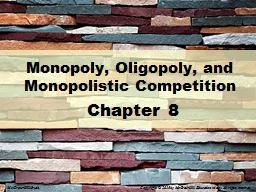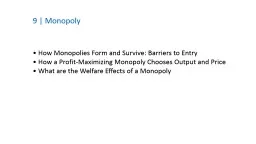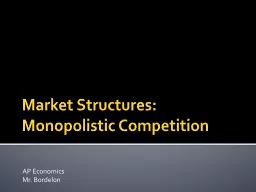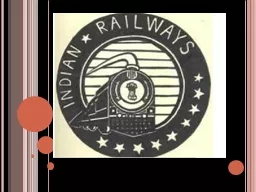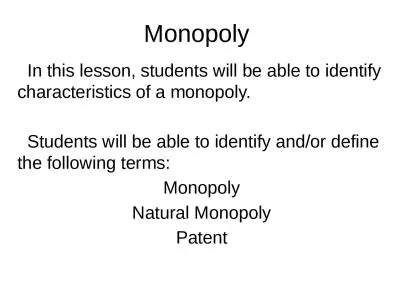PPT-Monopoly, Oligopoly, and Monopolistic Competition
Author : trish-goza | Published Date : 2018-03-11
Chapter 8 McGrawHillIrwin Copyright 2015 by McGrawHill Education Asia All rights reserved Learning Objectives Distinguish among three types of imperfectly competitive
Presentation Embed Code
Download Presentation
Download Presentation The PPT/PDF document "Monopoly, Oligopoly, and Monopolistic Co..." is the property of its rightful owner. Permission is granted to download and print the materials on this website for personal, non-commercial use only, and to display it on your personal computer provided you do not modify the materials and that you retain all copyright notices contained in the materials. By downloading content from our website, you accept the terms of this agreement.
Monopoly, Oligopoly, and Monopolistic Competition: Transcript
Download Rules Of Document
"Monopoly, Oligopoly, and Monopolistic Competition"The content belongs to its owner. You may download and print it for personal use, without modification, and keep all copyright notices. By downloading, you agree to these terms.
Related Documents

